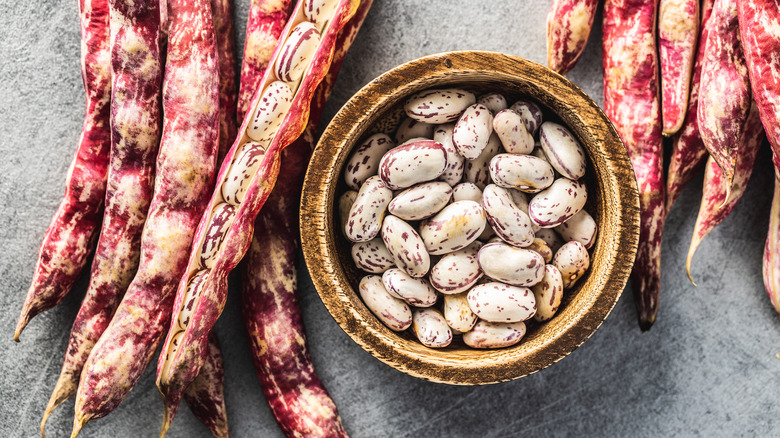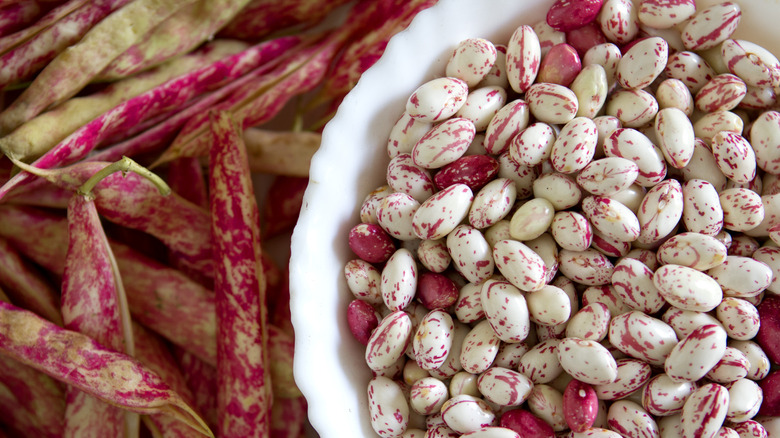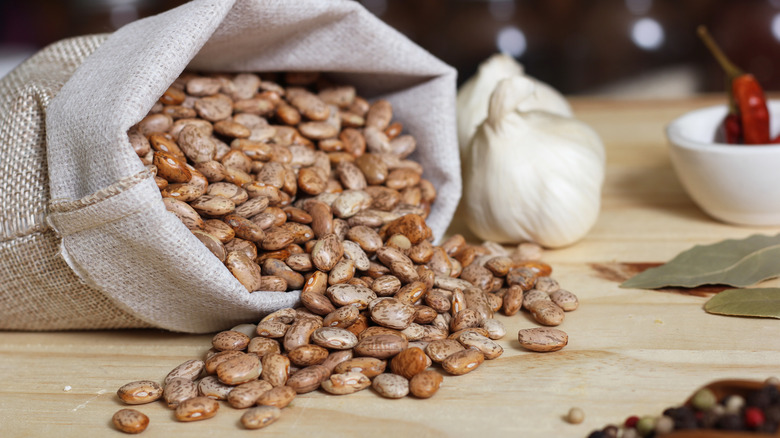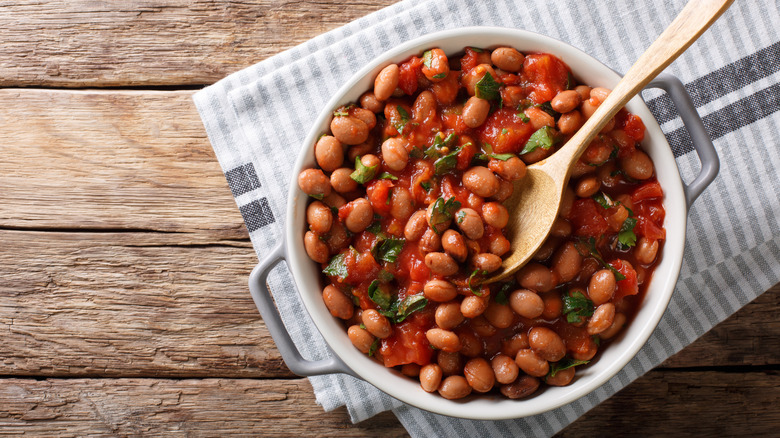What Are Cranberry Beans And How Do They Differ From Other Beans?
Beans, beans, beans! Refry them, stick them in stews, mix them into your world-famous chili, or scoop them up with a side of fried rice. Legumes have been, and always will be, at the heart of many recipes and cuisines worldwide. In China and Japan, they fill mochi with red bean paste. In India, rajma dal is a beloved bean curry, and Brazil's national dish is feijoada, which is a black bean stew.
Beans are technically legumes and have a wealth of vitamins, fibers, protein, fats, and minerals, all of which are excellent for the human body's health, aiding with things like cholesterol and blood sugar (via Healthline). Better with Beans claims that there are over 400 bean varieties growing today all over the world. They have been nourishing the human population for a long time, and without them, our meals would certainly be less delicious and our health sub-par. But, while we are familiar with varieties like the black bean, kidney bean, and green bean, one of them commonly gets passed over despite its delicious and hearty nature: the cranberry bean, aka the borlotti bean.
What are cranberry beans?
These beans are fairly attractive little legumes, notable for their pale white skin, freckled with bright splotches of pink and maroon. Known as the cranberry bean in the United States and the borlotti bean in Italy, the food goes by many other names, including the rosecoco bean, gadhra bean, shelling bean, saluggia bean, and more (via Sweetish Hill). Allrecipes describe the legumes as tasting creamy with a distinct nutty characteristic. They are quite popular in Italian and Portuguese recipes. When cooked, they turn from that lovely cream and red speckled color to a standard brown hue, and Rancho Gordo says that the ingredient creates a hearty broth ideal for pasta and stew recipes.
They are known to be thin-skinned, dense, and rich in nutrients. Fitness Genes reports that cranberry beans are an inexpensive plant-based protein and are a fantastic source of calcium, copper, magnesium, and iron, with enough fiber to help support a healthy digestive system. Ultimately, not only are these little guys delicious, they are a nutritious powerhouse that you can mix into almost any dish without breaking the bank.
Cranberry beans vs. pinto beans
Odds are that you've heard more about the pinto bean than the cranberry bean throughout your life. The former looks similar in size and shape to the latter, but it is brown-speckled in color before and after being cooked. According to Camellia, pinto beans contain the most fiber out of any other kind of legume and are often the top pick when making chili or Mexican and Peruvian cuisine. This is because those regions are where the bean was first cultivated over 5,000 years ago. However, today, the pinto variety is widely used in Mexican and American Tex-Mex cuisine and is often used to make burritos and refried beans.
On the flip side, Food Republic claims that cranberry beans originated in Colombia (called cargamanto beans in their native country) but have become quite popular in countries bordering the Mediterranean Sea, especially Italy. They look a lot like pinto beans after they are cooked and are used in many of the same ways. However, cranberry beans today are more commonly included in soups, salads, and polenta-based dishes.
Treat Dreams tells us that pinto beans are also known for their rich, nutty flavor, but cranberry beans tend to taste stronger in that respect. Additionally, according to Mexican Please, in Mexico, the cranberry bean is the most popular variety to substitute for pinto in traditional meals when the latter is unavailable.
How to cook with cranberry beans
Cranberry beans may not be in your kitchen yet, but they absolutely should be. There are many recipes for the ingredient, ranging from simple to complicated. Dad Cooks Dinner recommends that cranberry beans are the best way to go for a no-hassle instant pot meal. The site says that using dried is better than canned, and if you use a pressure cooker, these delicious, protein-packed legumes will be ready in an hour. You can then serve them over rice, eat them alone, or prepare them as a simple, yummy side to an entrée.
Food & Wine claims that the best way to use cranberry beans is to make them the way they do in Mexico City. The legumes are left to simmer in sofrito (a mash of veggies, herbs, and spices widely used in Hispanic cuisine), making one fresh-tasting veggie stew that can be served with pico de gallo and warm tortillas. Nutstop says that however you decide to chow down on cranberry beans, you'll receive ample protein, the nine essential amino acids they carry, and thiamine, which improves brain health. These legumes are a cheap, healthy food to dig into and can be bought online through carriers like Rancho Gordo or at grocery stores that carry a wide variety of vegetables.



